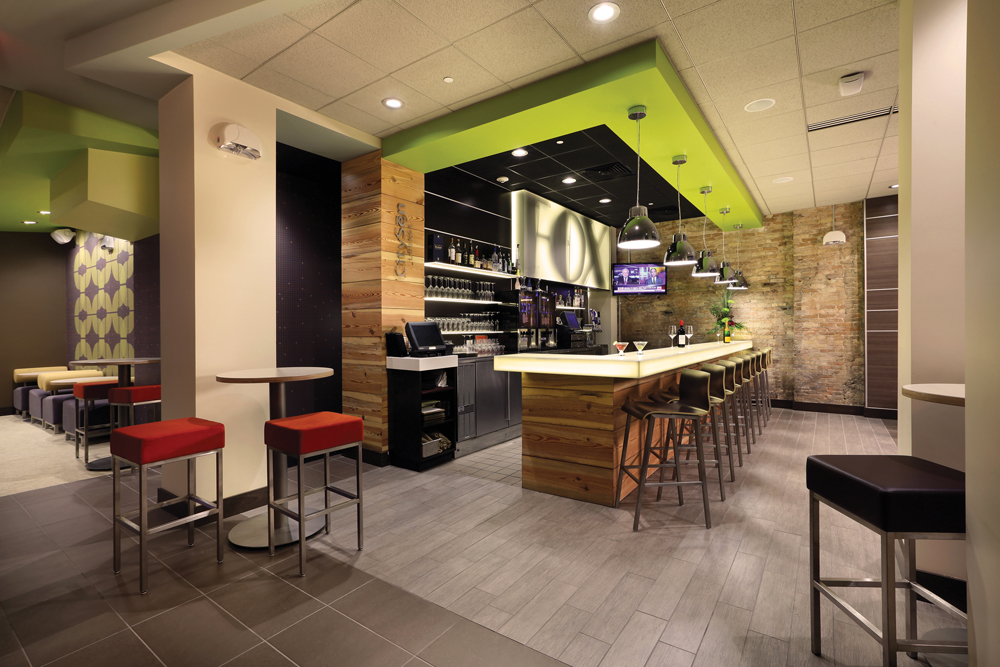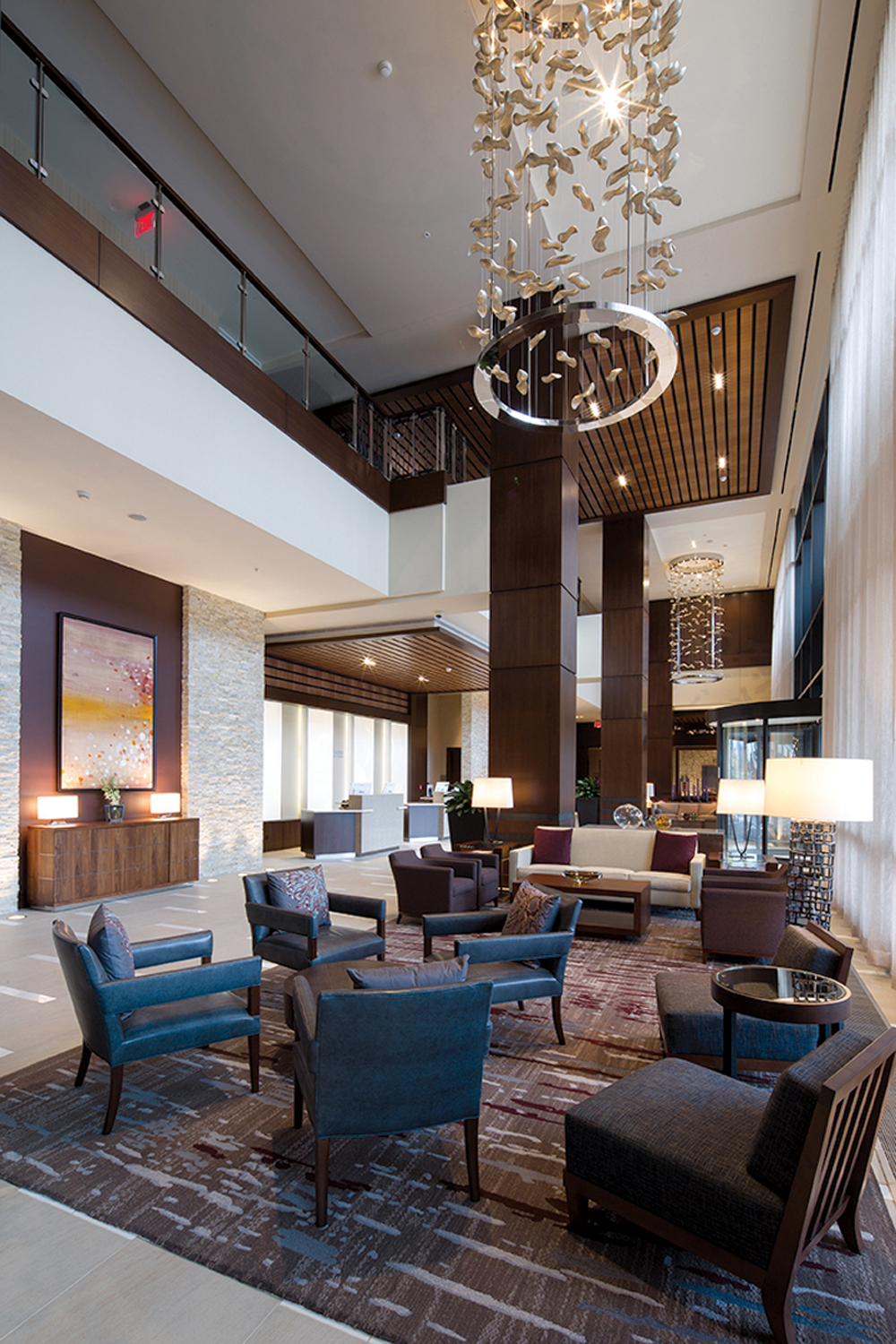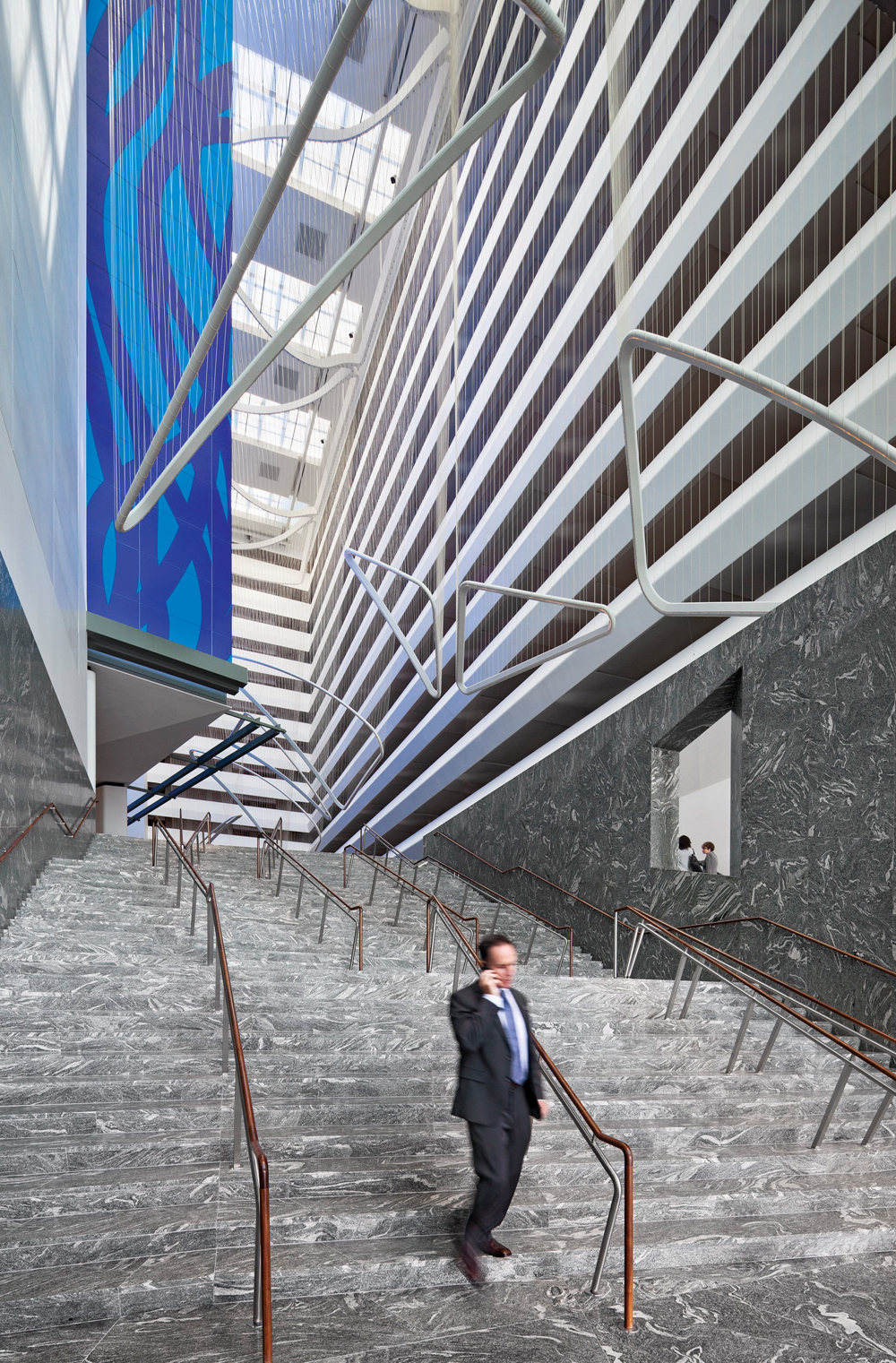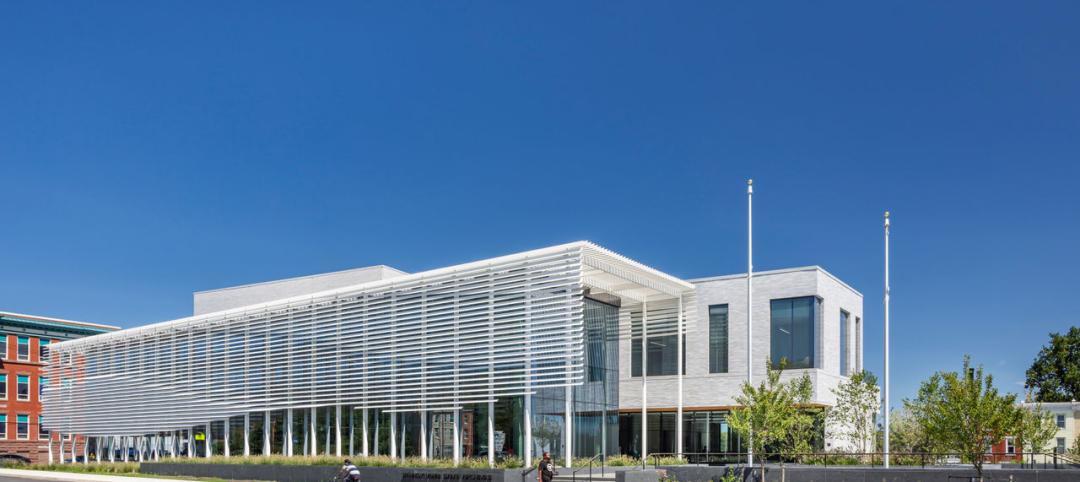There’s more to creating a sustainable hotel than saving water and power by asking guests to reuse their towels. Nevertheless, O&M—from laundry reduction to soap conservation to waste recycling—has long been the major green focus of the hospitality industry, eclipsing sustainable capital projects. Though most lodging chains have adopted sustainability targets, fewer than 100 hotels in the U.S. have achieved LEED Gold or higher to date, including just three Platinums.
A long-awaited version of LEED for Hospitality, which would reflect the unique characteristics of the building type, might encourage more owners and developers to consider certification. But the plan was sidelined as USGBC worked on LEED v4, with hotel-oriented tweaks still contemplated under the NC, EB, and CI systems. Some firms aren’t waiting, and have announced intentions to make their future capital developments greener.
The LEED Volume program, launched in late 2010, aims to grease the wheels by granting precertification of properties once an initial prototype is certified. Marriott was an early adopter, successfully enrolling its Courtyard, TownePlace Suites, and Residence Inn brands. The firm is still working on others, with a stated goal of achieving 300 LEED properties by 2015. Thirteen have hit the mark so far, including seven Golds. Other hospitality-sector Volume participants include Starwood Hotels & Resorts (for the Element brand) and IHG (LEED-EB, for its Green Engage program).
Once the home of Fox Jewelry, this 19th-century building in Grand Rapids, Mich., has been reborn as the boutique, 28-room CityFlats Hotel. Like its new-construction sister property in Holland, Mich., the five-story CityFlats has been certified LEED Gold. Sustainable features include cork flooring, high-efficiency heating and cooling units with occupancy sensors, low-flow plumbing, energy-efficient lighting, and countertops made of Cradle to Cradle–certified glass and concrete. The Building Team: Charter House Innovations (developer), GMB Architecture + Engineering (architect), and GDK Construction (contractor). MICHAEL BUCK / M-BUCK STUDIO
Green marketing to consumers is also gathering steam in the sector. A 2008 survey by Deloitte (http://bit.ly/17389dQ) indicated that business travelers are increasingly interested in sustainable lodging. Forty percent of respondents said they’d be willing to pay a premium for it.
Hotel search engine TripAdvisor (www.tripadvisor.com) quietly rolled out its GreenLeaders program earlier this year, in cooperation with Energy Star, the USGBC, and the United Nations Environment Programme. TripAdvisor vets applicant properties for green O&M but also looks at building design aspects, such as glazing, lighting, HVAC, and landscaping. “Badge” rankings—Bronze, Silver, Gold, and Platinum—are promoted on the TripAdvisor site. Consumers can now select “green” as a search filter, putting sustainability on a par with characteristics like “romantic” and “luxury.” The program is free to participating hotels, which must agree to submit to a third-party audit if questions arise, including consumer feedback regarding inaccurate sustainability claims.
Though they’re less well known to the general public, alternative paths to green hotel branding exist. The main players are Green Key Global (encompassing about 3,000 hotels in the U.S. and Canada); Green Seal, which currently has about 80 participants certified under its GS-33 Standard for Lodging Properties; and Audubon International, with about 150 Green Lodging Program properties concentrated in New York and Florida. Annual participation costs range from $400 to $3,000 per property, involving assessments of O&M as well as the built environment. Some programs require verification by an independent auditor. None are as structure-oriented as LEED.
Alabama’s first LEED Silver hotel, the new 10-story Westin Birmingham, is part of Starwood’s 30/20/20 initiative. The program urges all the company’s properties to reduce energy consumption by 30% and water consumption by 20% by the year 2020. LEED credits related to Sustainable Sites and Indoor Environmental Quality were a focus for the Birmingham project. B&G-MCS A Joint Venture, combining Brasfield & Gorrie and Monumental Contracting Services, created the building in cooperation with Rabun Rasche Rector Reese Architects. Also on the Building Team: The Safaie Landry Partnership (MEP/FP), MBA Structural Engineers (SE/CE), and Bhate Engineering Corp. (geotechnical). © MASON FISCHER PHOTOGRAPHY / COURTESY BRASFIELD & GORRIE
Starwood’s “eco-wise” Element brand, launched in 2008, is another powerful illustration of how seriously the sector is now taking green marketing. The first international property, Element Vaughan Southwest, opened in suburban Toronto this past September, joining 10 U.S. properties. Starwood hopes to roll out more Elements in Europe, North America, and Asia during the coming decade. LEED, minimally at the certified level, will be pursued brand-wide; the flagship Lexington, Mass., property was Starwood’s first Gold-level project. Element’s marketing language combines the traditional “reuse-reuse-recycle” theme with LEED education.
With the AIA Consensus Construction forecast predicting 15% growth in the hospitality sector next year, on top of this year’s 17% increase, investments in green projects may finally be making more sense to decision makers. There’s plenty of room for progress in both the new construction and renovation categories, building on the operational green thinking that’s already pervasive. Stephen Galbreath, AIA, ISHC, LEED AP BD+C, says adaptive reuse of historic properties, an inherently sustainable choice, looks particularly exciting right now.
“Several brands, such as Virgin Hotels and Trump Hotel Collection, have already started to embark on this trend,” says Galbreath, VP for the Commercial Practice Group at RTKL, an ARCADIS company. “Reportedly, Virgin is set to transform an existing Chicago office building, and Trump Hotel Collection is reinventing the Old Post Office building in Washington, D.C. The possibilities of reimagining historic buildings that were never before considered as candidates for hotel development are overwhelming. These are now thought of as viable and sustainable options for hospitality environments.”
The Conrad New York, created through expansion and renovation of an existing Embassy Suites hotel, achieved LEED Gold this year. The 463-suite luxury property also has earned an ISO 14001 certification in environmental management. A green roof and garden provides vegetables for two restaurants, and LEDs account for more than 60% of the hotel lighting. Water-conserving fixtures and sustainable materials contributed to the Gold rating. The Building Team: Kohn Pedersen Fox Associates, Kuwabara Payne McKenna Blumberg, Monica Ponce de Leon Studio, and Deborah Berke Partners (architects), Jill Greaves Design and Remedios Studio (interiors), L’Observatoire International (lighting design), WSP Flack & Kurtz (MEP), Thornton Tomasetti (SE), and F.J. Sciame Construction and Hunter Roberts Construction Group (contractors). MICHAEL MORAN
Related Stories
MFPRO+ News | Jan 2, 2024
New York City will slash regulations on housing projects
New York City Mayor Eric Adams is expected to cut red tape to make it easier and less costly to build housing projects in the city. Adams would exempt projects with fewer than 175 units in low-density residential areas and those with fewer than 250 units in commercial, manufacturing, and medium- and high-density residential areas from environmental review.
Contractors | Dec 22, 2023
DBIA releases two free DEI resources for AEC firms
The Design-Build Institute of America (DBIA) has released two new resources offering guidance and provisions on diversity, equity, and inclusion (DEI) on design-build projects.
MFPRO+ News | Dec 22, 2023
Document offers guidance on heat pump deployment for multifamily housing
ICAST (International Center for Appropriate and Sustainable Technology) has released a resource guide to help multifamily owners and managers, policymakers, utilities, energy efficiency program implementers, and others advance the deployment of VHE heat pump HVAC and water heaters in multifamily housing.
Sustainability | Dec 22, 2023
WSP unveils scenario-planning online game
WSP has released a scenario-planning online game to help organizations achieve sustainable development goals while expanding awareness about climate change.
Healthcare Facilities | Dec 19, 2023
A new hospital in Duluth, Minn., is now the region’s largest healthcare facility
In Duluth, Minn., the new St. Mary’s Medical Center, designed by EwingCole, is now the largest healthcare facility in the region. The hospital consolidates Essentia Health’s healthcare services under one roof. At about 1 million sf spanning two city blocks, St. Mary’s overlooks Lake Superior, providing views on almost every floor of the world’s largest freshwater lake.
Government Buildings | Dec 19, 2023
New Pennsylvania State Archives building holds documents dating back to 1680
Work was recently completed on a new Pennsylvania State Archives building in Harrisburg, Penn. The HGA-designed, 146,000-sf facility offers numerous amenities, including computers, scanners, printers, a kitchenette with seating, lockers, a meeting room, a classroom, an interactive video wall, gallery, and all-gender restrooms. The features are all intended to provide a welcoming and comfortable environment for visitors.
MFPRO+ News | Dec 18, 2023
Berkeley, Calif., raises building height limits in downtown area
Facing a severe housing shortage, the City of Berkeley, Calif., increased the height limits on residential buildings to 12 stories in the area close to the University of California campus.
Green | Dec 18, 2023
Class B commercial properties gain more from LEED certification than Class A buildings
Class B office properties that are LEED certified command a greater relative benefit than LEED-certified Class A buildings, according to analysis from CBRE. The Class B LEED rent advantage over non-LEED is about three times larger than the premium earned by Class A LEED buildings.
Codes and Standards | Dec 18, 2023
ASHRAE releases guide on grid interactivity in the decarbonization process
A guide focusing on the critical role of grid interactivity in building decarbonization was recently published by ASHRAE. The Grid-Interactive Buildings for Decarbonization: Design and Operation Resource Guide provides information on maximizing carbon reduction through buildings’ interaction with the electric power grid.
Architects | Dec 18, 2023
Perkins&Will’s new PRECEDE tool provides access to public health data to inform design decisions
Perkins&Will recently launched a free digital resource that allows architects and designers to access key public health data to inform design decisions. The “Public Repository to Engage Community and Enhance Design Equity,” or PRECEDE, centralizes demographic, environmental, and health data from across the U.S. into a geospatial database.




















